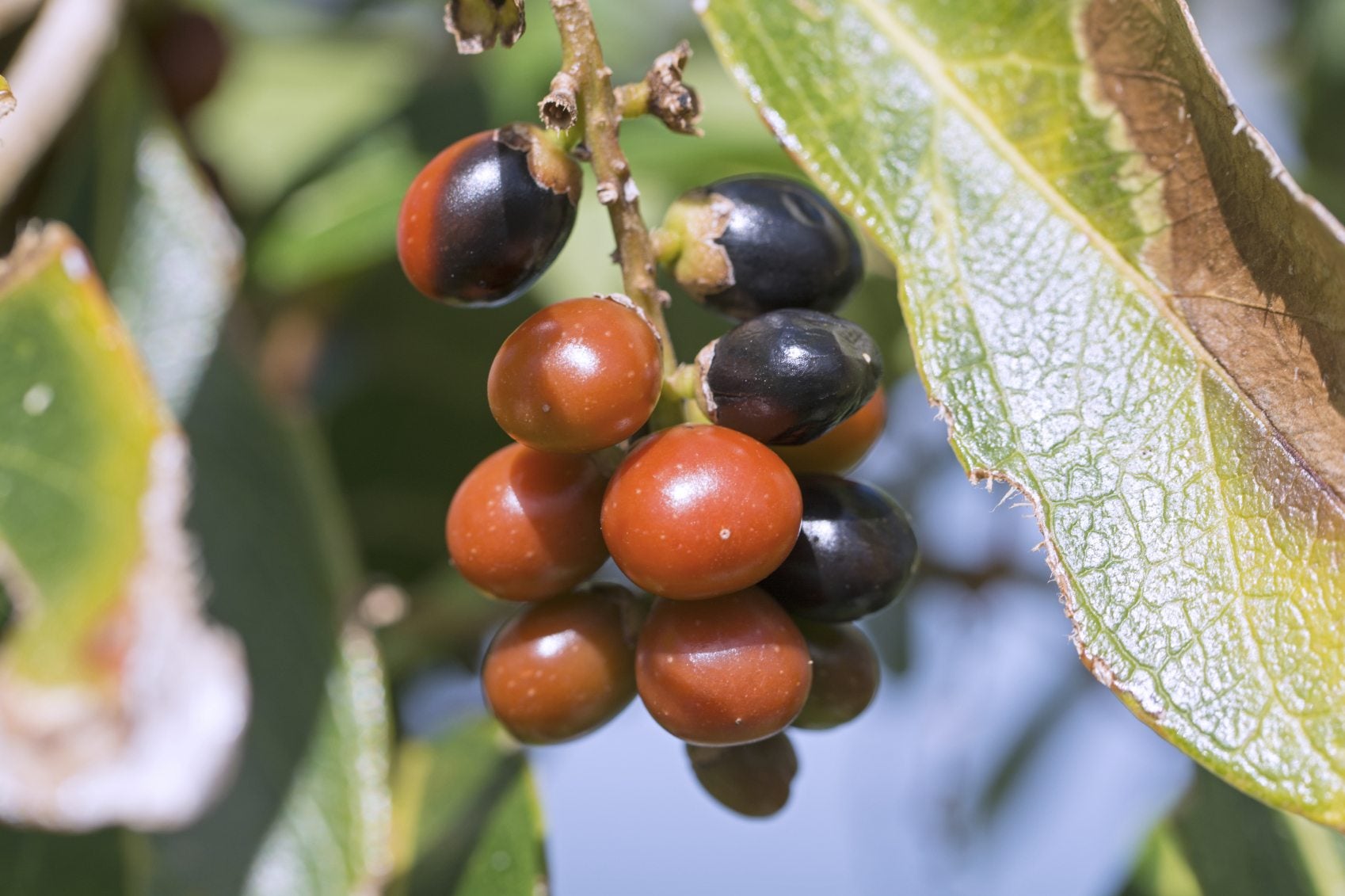Rumberry Tree Information: What Is A Rumberry Tree

What is a rumberry tree? If you are an adult beverage enthusiast, you may be more familiar with its alternate name of guavaberry. Guavaberry liquor is made from rum and the fruit of the rumberry. It is a common Christmas drink on many Caribbean islands, especially on St. Maarten and the Virgin Islands. What are some other rumberry tree uses? Read on to find out what other rumberry tree information we can dig up.
What is a Rumberry Tree?
Growing rumberry trees (Myrciaria floribunda) are native to the Caribbean islands, Central and South America through North Brazil. Rumberry is shrub or slim tree that reaches 33 feet (10 m.) and up to 50 feet (15 m.) in height. It has reddish brown branches and flakey bark. An evergreen, the leaves are wide, glossy, and slightly leathery – dotted speckled with oil glands. Blossoms are born in small clusters and are white with about 75 obvious stamens. The resulting fruit is small, (the size of a cherry) round, dark red to nearly black or yellow/orange. They are extremely fragrant, redolent of pine resin, tangy and acidic accompanied by a degree of sweetness. There is a large pit or stone surrounded by translucent flesh that is discarded. As mentioned, native growing rumberry trees are found throughout parts of the Caribbean and Central and South America. Specifically, they have a broad reach and spread out over Cuba, Hispaniola, Jamaica, Puerto Rico, the Virgin Islands, St. Martin, St. Eustatius, St. Kitts, Guadeloupe, Martinique, Trinidad, southern Mexico, Guiana, and eastern Brazil.
Care of Rumberry Tree
It is not generally cultivated for commercial harvest. Where it grows wild, however, when land is cleared for pasture, the trees are left standing for continued harvest of the wild fruit. Only minimal attempts have been made growing rumberry trees for study and almost none for commercial production. Due to this, there is very little information on the care of rumberry trees. The trees do tolerate a short frost to the upper 20's F. (-6 C.). They thrive in both dry and moist climates in warm temperatures. They grow naturally along coastal forests from sea level up to 700 feet (213 m.) in elevation as well as in dry forests in some countries up to 1,000 feet (305 m.).
Rumberry Tree Uses
Besides the celebratory aperitif mentioned above, rumberry can be eaten fresh, juiced, or made into jams or desserts such as tarts. The guavaberry liqueur is made from the fruit along with rum, pure grain alcohol, raw sugar, and spices. The fruit also used to be made into a wine and liqueur beverage that was exported from St. Thomas to Denmark. Rumberry is purported to have medicinal effects as well and is sold by herbalists in Cuba to treat liver ailments and as a cleansing remedy.
Gardening tips, videos, info and more delivered right to your inbox!
Sign up for the Gardening Know How newsletter today and receive a free copy of our e-book "How to Grow Delicious Tomatoes".

Amy Grant has been gardening for 30 years and writing for 15. A professional chef and caterer, Amy's area of expertise is culinary gardening.
-
 ‘Coral Charm’ Peony Care For Sublime Semi-Double Peonies With Lush Salmon Pink Flowers
‘Coral Charm’ Peony Care For Sublime Semi-Double Peonies With Lush Salmon Pink FlowersPeonies are known for their soft baby pink or magenta tones, but if plushy coral blooms are your thing, here’s our guide to the ultimate ‘Coral Charm’ peony care
By Tonya Barnett
-
 How To Grow Seeds Quickly: 8 Expert Tricks For Fast Flowers & Crops
How To Grow Seeds Quickly: 8 Expert Tricks For Fast Flowers & CropsIt's never too late to start growing! Jump-start your flower or vegetable garden with these pro tips and tricks for germinating seeds in record time.
By Amy Grant